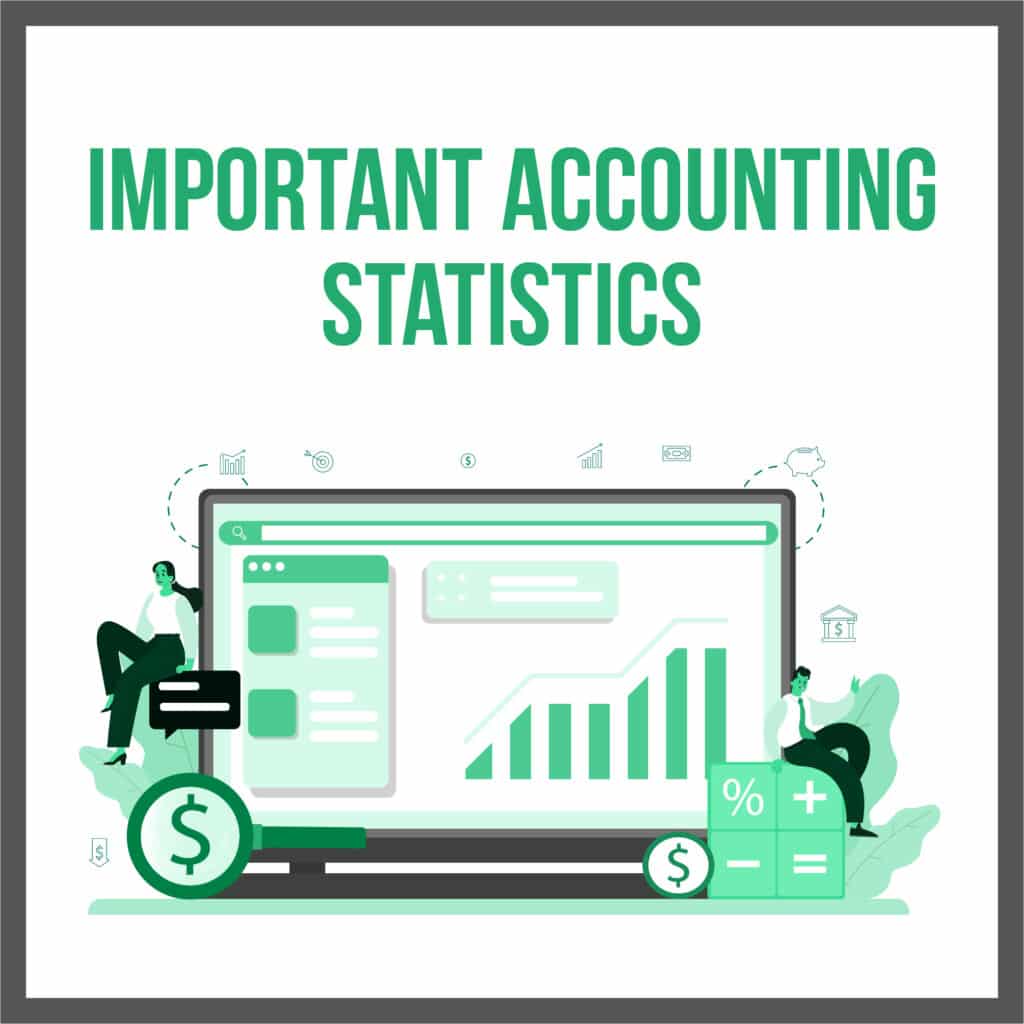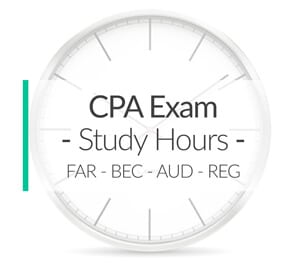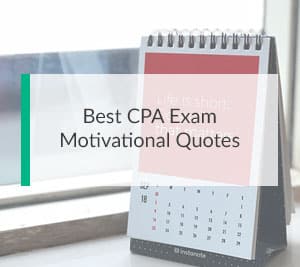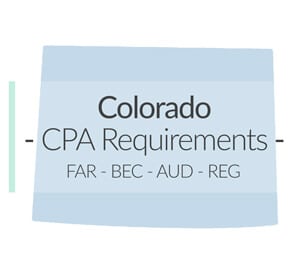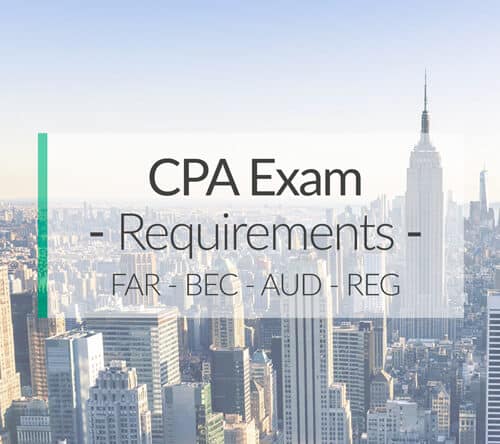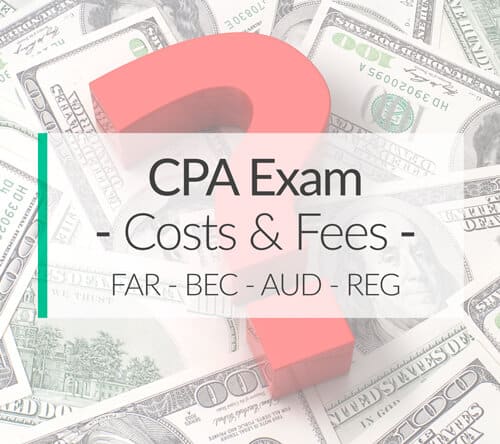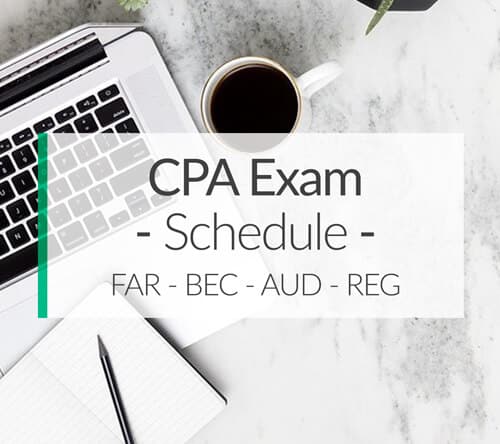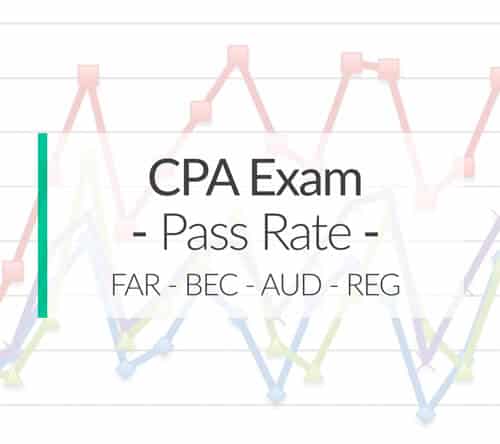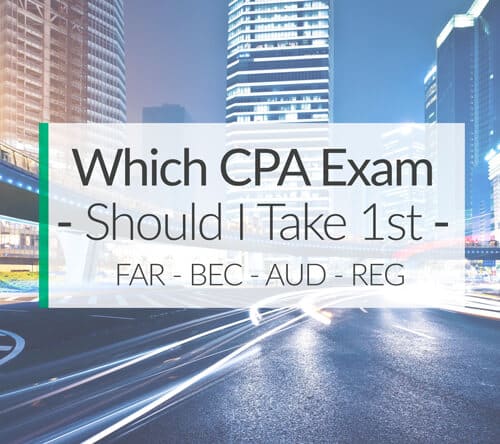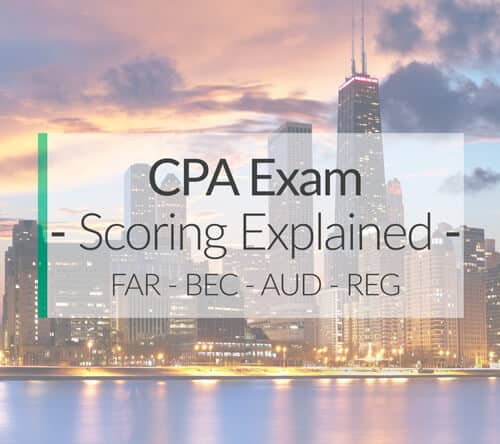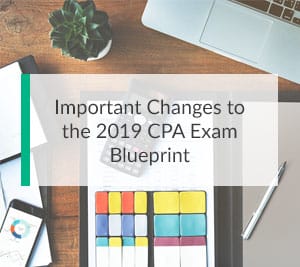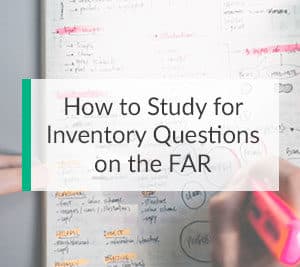
Inventory is often the largest asset on a company’s books in terms of total dollars. As a result, it should come as no surprise that inventory topics are heavily tested on the FAR section of the CPA exam.
As you study for the inventory questions, it’s easy to get lost in the number crunching and not focus on the key concepts. Therefore, be sure to use the discussions and examples below to study effectively for the inventory questions on the FAR exam.
Knowing your way around these intricate concepts will greatly increase your chances of passing the challenging FAR exam!
Connecting Inventory Value And Net Income
The majority of inventory questions focus on the valuation method selected. In other words, what assumptions were used to assign a cost to each item in inventory?
Inventory valuation has a big impact on the cost of sales and, ultimately, on the net income generated by a company. Here’s a simple example:
A business assigns a cost of $100 to a jacket. When the jacket is sold, the $100 is reclassified from inventory (an asset account) into cost of goods sold (an expense account). If the sales price on the jacket is $150, the firm recognizes a $50 profit, which increases net income.
On the other hand, if the jacket had an inventory cost of $95, cost of goods sold would be lower and net income would be higher.
Once you understand that basic connection, you can move on to the consideration of inventory valuation methods.
Valuation Methods
The valuation method questions focus on three methods: FIFO, LIFO, and weighted average. Before you dive into these concepts, remember these key points:
- Total dollar value: The total value of inventory is the same, regardless of which valuation method is chosen. For example, if you start with $20,000 in inventory and sell all of your inventory items, total cost of sales will be the same regardless of the method that you choose.
- Units bought and sold: The total units purchased and sold are the same for any valuation method chosen for inventory. If you purchase 500 units during the month and sell 200 units, the total number of units bought and sold will be the same.
- Timing of the expense: The differences between the valuation methods are based on timing of cost of goods sold and profit. Some methods recognize more costs sooner, while others post more costs later. In total, however, the dollar amounts, units purchased, and units sold are the same.
Keep these important concepts in mind as you review the following example:
Assume that Beth owns a retail furniture store and she starts the month of January with no chairs in inventory. During January, she makes these purchases and sales:
| Date | Activity | Cost per unit |
| Jan 5 | Purchase 50 units | $120 |
| Jan 20 | Purchase 100 units | $135 |
| Jan 27 | Purchase 75 units | $140 |
| Jan 30 | Sell 150 units | To be determined |
This is the typical format of a FAR test question. Note that over time the price per unit increases. Since prices generally increase over time due to inflation, you’ll typically see higher costs for purchases made later in a month or year.
Here are the three most-tested inventory valuation methods and how they fit into this scenario:
- FIFO: FIFO, or First-in, first out, means that the oldest inventory items are sold first. The 150 units sold would be assigned a cost of $120 for 50 units, and $135 for 100 units. Cost of goods sold equals $19,500.
- LIFO: LIFO, or Last-in, first out, means that the newest inventory items are sold first. The 150 units sold would be assigned a cost of $140 for 75 units, and $135 for 75 units. The cost of goods sold equals $20,625.
- Weighted Average: As the name implies, weighted average takes the total inventory cost and divides the amount by the total number of items in inventory. In this case, the total value of inventory is $30,000 and 225 units were purchased. The weighted average cost per unit is ($30,000 / 225 units), or $133.33 per unit. (150 units at $133.33), or $20,000, is the total cost of goods sold.
As you can see, the weighted average cost of goods sold total ($20,000) is between the FIFO and LIFO cost of goods sold balances.
Ending Inventory
The items a business has in inventory are either sold or they remain on the shelf as unsold.
At the end of each month, you should be able to account for all of your inventory costs in either cost of goods sold or in ending inventory. The FAR exam may require you to calculate both cost of goods sold and ending inventory, either in units or in total dollars.
You can use the same table information listed above to calculate ending inventory using the three valuation methods:
| Date | Activity | Cost per unit |
| Jan 5 | Purchase 50 units | $120 |
| Jan 20 | Purchase 100 units | $135 |
| Jan 27 | Purchase 75 units | $140 |
| Jan 30 | Sell 150 units | To be determined |
| Ending Inventory | 225 units purchased minus 150 units sold = 75 units |
Consequently, you have to change your thinking and consider what costs and items remain in inventory rather than what was sold. Ending inventory in units is 75 but the value assigned to those units depends on the valuation method used:
- FIFO: FIFO, or First-in, first out, means that the newest inventory items remain in ending inventory. In this case, the balance is (75 units at $140 per unit), or $10,500.
- LIFO: LIFO, or Last-in, first out, means that the oldest inventory items remain in ending inventory. In this case, the balance is (50 units at $120) + (25 units at $135), or $9,375.
- Weighted Average: The weighted average cost of ending inventory is (75 units at $133 per unit), or $10,000.
As a check figure, you can add the cost of goods sold and the ending inventory for each of the three methods. In each case, the total is $30,000; this proves that you accounted for all the units purchased and sold as well as the total inventory cost.
Use A Template
As you work on inventory-related practice questions on inventory, get in the habit of setting up a template using the format listed above. This format makes it easier to understand the information provided, and to quickly find answers to a particular test question.
In some cases, you won’t need to set up the entire template that was outlined in these examples. However, consistently using the same format will help you nail down these concepts and pass the FAR test with flying colors.
I hope this helps you in your CPA exam studies and I wish you the best of luck!




